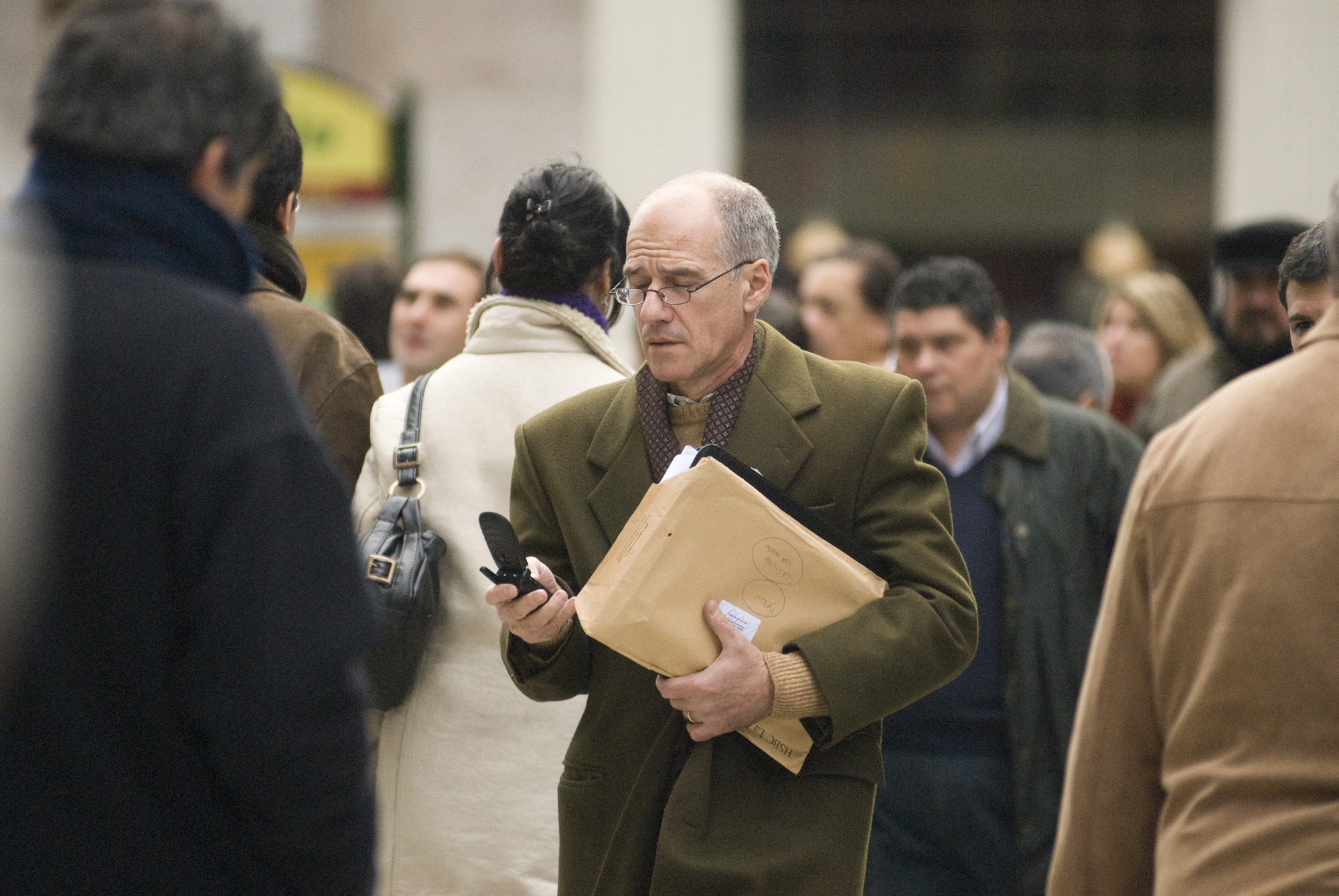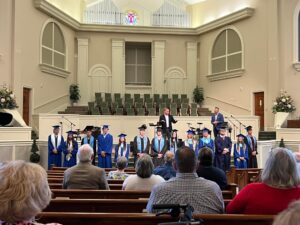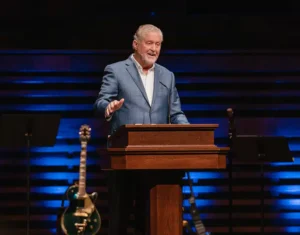
NOTE TO READERS: The 2008 Lottie Moon Christmas Offering focuses on missionaries who serve in South America as well as churches partnering with them, exemplifying the global outreach supported by Southern Baptists’ gifts to the Lottie Moon offering. The 2008 theme is “Go Tell the Story of Jesus.” National offering goal: $170 million. Almost 380 million people live in South America — and about 355 million of them don’t know Jesus as Savior and Lord. Nearly eight of every 10 South Americans now live and work in cities — a percentage that will rise in the years to come. The continent counts no fewer than 39 megacities (populations topping 1 million each). Churches and missionaries often struggle in their efforts to penetrate the fast-moving, fragmented world of cities. Strategies need to change, but how? The following stories take a look at the challenge of one of the continent’s urban giants: Buenos Aires, Argentina. View a multimedia presentation about Buenos Aires — including video, sound and additional photos — here.
BUENOS AIRES, Argentina (BP)–Is it possible to feel alone in a city of 13 million people? It is in Buenos Aires.
Loreley Lago, 18, studies oceanography at the University of Buenos Aires, one of 320,000 young Argentines enrolled at its multiple campuses. She cares about the environment and wants to help people but doubts she can do much to change the world.
Lago grew up Catholic, like most Argentines, but describes herself as “not very religious.” She believes in God but says she has “learned to put a lot of faith in myself. I can do the things I need to do.” Still, she often wonders what comes after death.
Her biggest daily struggles: insecurity and fear. “When I go out alone, I’m looking everywhere so that no one follows me,” she said. “That bothers me a lot — the things I can’t control.”
Buenos Aires, glittering jewel of South American cities, is Argentina’s capital, economic hub, cultural center and home to a third of the nation’s 40 million people. More than 13 million Porteños — or “people of the port,” as residents of this giant city on La Plata River call themselves — live and work in greater Buenos Aires. The city ranks as the second-largest metropolis on the continent (after São Paulo, Brazil) and the 10th-largest in the world, according to United Nations statistics.
Multimillion-dollar apartments sprout in the capital. Living space can cost up to $300 per square foot. Argentina’s economy stands or falls on the financial health of Buenos Aires. Cristina Fernández de Kirchner, Argentina’s first elected female president, symbolizes the city’s glamorous, sophisticated image.
STRONGHOLD OF FEAR
But if you look beneath the surface of modern Buenos Aires’ frenetic pace, its wide avenues, its trendy bars and tango cafes, its cultural riches and European atmosphere, you find deep undercurrents of isolation, insecurity, hopelessness — and fear.
It’s a strange dynamic for a great city that seemingly has entered a new era of growth. Why the pervasive sense of unease?
“In a big city, the spiritual strongholds are loneliness and fear,” said missionary David Bufkin*, the International Mission Board’s team leader and strategy coordinator for Buenos Aires. “It may seem crazy to think about being lonely when you’re surrounded by 13 million people, but they are.
“People live their lives scared. They’re afraid to go out at night. They’re afraid someone is going to take something from them. People who don’t have anything are afraid they’re not going to eat the next day. Fear drives people to do irrational and immoral things. It makes the wealthy become reclusive. It makes the poor get involved in crime or drugs to find an escape.”
The crime rate is no higher than in other major world cities; it’s lower than some. Buenos Aires is not Rio de Janeiro, where violent gangs rule whole neighborhoods and engage in street shootouts with the police. It’s not even Detroit. But perception is reality in a city where people remember when they could walk down any street unmolested at 3 a.m.
Those days are gone — along with the values and sense of community Porteños once shared. The metal bars now guarding doors and windows represent something deeper than simple fear of crime. The waves of political violence, economic chaos and social turmoil experienced by Argentines since the 1970s have left a legacy of suspicion, disillusionment and cynicism — similar to the malaise that has plagued the United States in recent years.
“People just don’t trust anyone anymore,” said Bufkin, who is from Moore, Okla. “They don’t trust their government. They don’t trust the police. They don’t trust the mechanic they take their car to. People have been burned by the traditional church. They’ve been burned by the ‘health, wealth and prosperity’ preachers. People who claimed to be looking out for them took advantage of them. So it generates an introverted mindset that says, ‘It’s me and my family’ and everybody else should be kept at arm’s length.
“It’s a huge barrier to the Gospel, because it makes it very difficult to approach people and share. You’ve got this priceless gift you’d like to give everybody, but fear keeps them from being open to even talking about it.”
BARRIERS AND CHALLENGES
Fear and distrust aren’t the only barriers to the Gospel in Buenos Aires. Nominal Catholicism (perhaps 5 percent of the population regularly attend Mass) has “inoculated” many people to faith. They think Christianity is something you’re born into and practice maybe once a year, if that often.
As in other major urban centers, materialism, secularism and postmodernism are more powerful draws than any organized religion — although a variety of cults attract the poor, the young and the gullible. As in Europe and North America, “tolerance” trumps tradition, opening the door to immorality, New Age beliefs and paganism.
The city’s social and ethnic diversity also poses challenges. Hundreds of thousands of students stream into the city from every corner of Argentina. Huge classes of national government employees, business professionals and blue-collar workers compete for pieces of the economic pie.
Buenos Aires’ strong European influence developed over generations through successive emigrations from Spain (Argentina’s former colonial ruler), Italy, Germany and other countries across the Atlantic. More recently, new waves of immigrants have flooded Buenos Aires from neighboring countries such as Bolivia, Paraguay and Peru. Many are members of indigenous tribal groups, such as the Quechua, seeking economic opportunities in the city’s surging economy.
The city’s Jewish community, largest in Latin America, counts at least 250,000 members. Arab-background Argentines, mostly Muslim and mostly from Lebanon and Syria, number about 160,000. Ethnic Japanese, long a familiar group in the city, total more than 30,000. Chinese and Koreans have arrived in significant numbers over the past 30 years. Slavs, Afro-Argentines and many other groups factor into the ethnic mix.
Then there’s the sheer size of greater Buenos Aires. The central Federal Capital (Argentina’s equivalent to the U.S. District of Columbia) is home to about 3 million people; many millions more drive in and out each day to work in government and business. Buenos Aires contains 48 separate — and often culturally distinct — barrios or neighborhoods.
Several of the larger barrios, such as Flores, Recoleta and Belgrano, are cities unto themselves with more than 100,000 residents each. Palermo is home to more than 250,000. Vast “zones” stretch north, south and west from the capital, encompassing whole communities that once were separate towns.
Another major barrier: People are hard to reach — not just spiritually but physically. In the Federal Capital, three of every four people live in apartments — typically, high-rise condos with vigilant doormen or locked entrances. Bufkin describes the daily schedule of many apartment-dwelling Porteños:
“They get up. They take an elevator downstairs and get in their car. They drive to work. They come back and hit their garage door opener. They drive downstairs, get in an elevator and go up to their apartment. Their actual contact outside of their home and work is practically nonexistent.”
Neighborhoods out in the “zones” have more of a suburban feel, with single-family homes and bits of green space. But people can be just as hard to meet.
“Our neighbors watch us to see how we live, and that has opened many a door for us to get into homes,” said a missionary in the West Zone, home to nearly 4 million people. “But outside our immediate area, it’s very difficult. People get behind locked doors and that’s it.”
TIME FOR NEW APPROACHES
What do these realities mean for the church? After more than a century of work by missionaries, Argentine Baptists and other evangelicals, the spiritual lostness of contemporary Buenos Aires rivals that of cities in much less evangelized regions of the world.
According to recent research, fewer than three in 100 Porteños claim evangelical faith in Jesus Christ. What’s more, the closer you get to the city center, the less responsive people are to the Gospel. Argentine Christians, understandably, tend to focus on evangelistic ministries beyond their capital.
The Federal Capital counts about 35 Baptist churches — many plateaued or declining in membership. Twenty of the city’s 48 barrios have no Baptist work at all. Protestant churches of all types number under 500 in the central city.
“A lot of these churches have been around for anywhere from 30 to 100 years, yet they are stagnant,” Bufkin said. “We have really struggled with how to start new churches. The need is immense, but we are never going to build hundreds or thousands of new church buildings.” No one has that much money.
Even if you built them, how would you get people to come inside?
There’s no single solution to the dilemma, but the time for some experimentation clearly has arrived. That’s exactly what Bufkin and his missionary team are doing.
One key strategy they believe can work: small groups — many, many of them — that develop behind locked doors among families and other “relationship circles.” Bufkin and his team are aiming for 2,500 home groups around the city one day — groups that guide lost people to faith, worship, make disciples and reproduce themselves. Many will gather in apartments and houses; others may meet in restaurants or businesses.
“Churches tend to grow along family lines; you invite someone you know,” he said. “Our goal is not to see big churches but small ones that grow and multiply.”
They can take different shapes for different kinds of people, too. Bufkin helped start a home church for upscale Porteños that includes three lawyers, a doctor of philosophy and a yacht club chef. Missionaries Jason and Kelli Frealy, meanwhile, launched a group among an extended network of relatives in a working-class neighborhood.
Students may need to be approached, at least initially, through text messaging and other forms of technology.
“People who have closed themselves off from society are not recluses,” Bufkin said. “They want contact. They’re just finding different ways of having it.” Christians need to find paths into those networks.
Walk through the Villa Lugano barrio with Bufkin and you get a sense of what he’s talking about. Seemingly endless lines of apartment towers stretch like high-rise fortresses into the distance. Each locked building is home to 2,000 residents; the whole development holds up to 100,000 people. The self-contained community features supermarkets, doctors’ offices, gyms.
“A lot of people find this place depressing, but to me it shouts opportunity,” Bufkin said. He imagines thriving worship groups in each building. He envisions Christian college students — or retirees — renting an apartment for a semester or a year and developing relationships. He dreams of Southern Baptist churches adopting Villa Lugano and other barrios and sending teams to start worship groups.
In South America, new approaches take time to win support. Some Argentine Baptists and other evangelicals, particularly young leaders, are enthusiastic about trying the small-group strategy. Others question whether it will work in a society where people think a church should look like a cathedral — or at least like a traditional sanctuary with a steeple.
“It’s radical to traditional church members and to your average nonbeliever,” missionary Jason Frealy said. “But if you look at saved versus lost, this city is lost. The message is the same: Jesus saves. Jesus gives eternal life. But it’s time to explore some different ways to spread that message.”
–30–
*name changed
Erich Bridges is a global correspondent for the Southern Baptist International Mission Board. Could God use your church to help reach a neighborhood in Buenos Aires? Some barrios with populations ranging from 20,000 to 250,000 have little or no evangelical witness. Consider sending volunteers and working with missionaries and Argentine believers to win this great city to Christ. For more information on this and other opportunities to bring light to the urban darkness of South America, visit www.takingit2theedge.org.
















